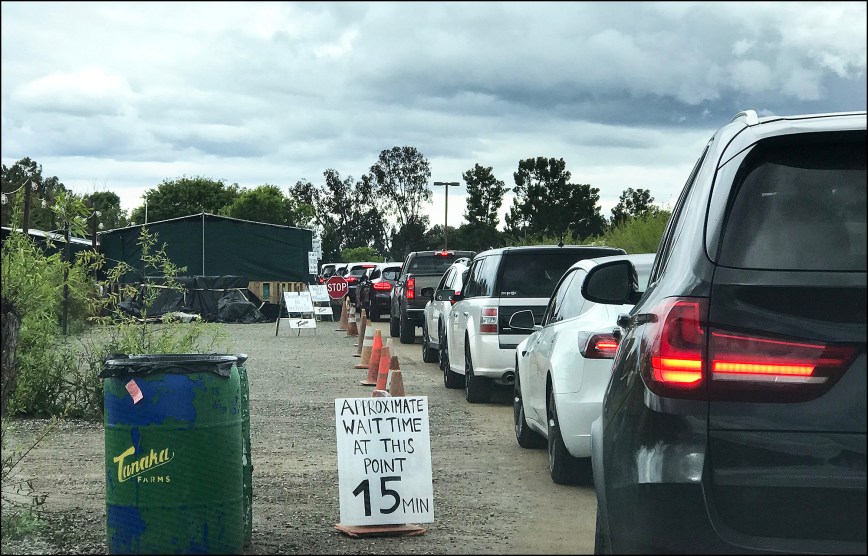
Waiting for drive-thru fruits and vegetables at a local farm.Kevin Drum
I want to summarize in one place a few of the coronavirus oddities I’ve noticed over the past week or so:
- Social distancing was supposed to reduce the transmission rate of the virus and push out the peak. Instead, the peak seems to have stayed the same or even been pulled forward.
- Grocery workers, by all odds, should be more at risk from the virus than the rest of us. But their death rate is lower than the national average for working-age adults.
- The case fatality rate varies exceptionally widely between countries. Some of this is due to testing differences, demographic differences, etc. But none of that seems to be enough to account for a range of 7x or so.
- Everyone agrees that the United States responded late and chaotically. But our death rate is pretty low compared to other similar countries.
- Sweden has deliberately adopted a much less stringent version of social distancing than other countries. Despite this, their death rate is about the same as most places (though higher than other Nordic countries).
I don’t have any conclusion to draw from all this. It just strikes me that there are enough little weirdnesses to make me wonder if something is going on that we’re missing. I can’t imagine what it might be, since the basic epidemiology of pandemics is reasonably well understood. And yet.















